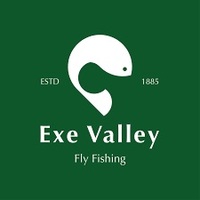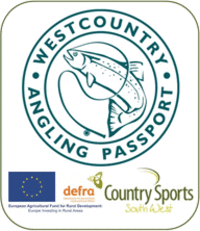Many thanks to
Exe Valley Fishery for facilitating the camera's location and to
The Westcountry Rivers Trust &
River Exe & Tributaries Association for capitally funding its installation.This was Farson Digital's first webcam and is located in the grounds of The Exe Valley Fishery. The name of the company comes from celebrated foreign correspondent and writer Negley Farson, who wrote about the bridge at Exebridge in his book 'Going Fishing' while he stayed at The Carnarvon Arms Hotel. The River Exe, located in England, originates at Exe Head near the village of Simonsbath in Somerset, approximately 8.4 kilometers (5 miles) away from the Bristol Channel coast. It predominantly flows due south, resulting in most of its course being within Devon. Stretching for 60 miles (96 km), it eventually meets the English Channel on the south coast of Devon, forming a significant ria known as the Exe Estuary.The name of the river has its roots in *Uɨsk, a Common Brittonic term meaning 'abounding in fish.' It is cognate with the Irish word 'iasc' (meaning 'fish') and the Welsh word 'pysg' (the plural form of 'fish'). This shared root also gave rise to the names Axe and Esk in English, as well as Usk in Welsh. However, contrary to some claims, it is not related to the word 'whisky,' which derives from the Classical Irish/Gaelic term 'uisgi' meaning 'water' (more specifically 'uisgi betha' or 'aqua vitae,' translating to 'water of life').The name of the river is reflected in various settlements along its course, including Exeter ('fortress on the Exe') and places like Exford, Up Exe, Nether Exe, Exwick, Exton, Exminster, and Exebridge. Near Exebridge, the River Barle joins the Exe. The estuary mouth is flanked by the seaside town of Exmouth on the east side and Dawlish Warren on the west, featuring a long sand spit extending across the mouth.During medieval times, the river played a pivotal role in fueling the growth and significance of Exeter. The city's first industrial area, known as Exe Island, was established in the 10th century by constructing a series of watercourses on the sandy and marshy land along the river. Numerous watermills were erected on the island, contributing to the production of paper and textiles.Tidal influence on the river is restricted at Trews Weir in Exeter, located two kilometers upstream from Countess Wear. Countess Wear was the site of a former weir commissioned by the Countess of Devon in the 13th century. To allow ships to reach Exeter Quay, the Exeter Canal was constructed, bypassing this weir. At high tide, the estuary forms a substantial body of water that is extensively utilized for water sports, particularly sailing, windsurfing, and water skiing.Railway lines run alongside both sides of the estuary. The Avocet Line connects Exeter to Exmouth on the eastern side, while the South Devon main line runs along the western side on the South Devon Railway sea wall, spanning from Powderham to Dawlish Warren. In the summer months, the Exmouth to Starcross Ferry operates, providing passenger transportation across the estuary, connecting the harbor at Exmouth with a pier adjacent to Starcross railway station on the South Devon main line.During low tide, vast mud flats are exposed, serving as a crucial feeding ground for wading birds. The Exe estuary, along with other rias in South West England, is an important site for wintering waders. Dawlish Warren is particularly favored for birdwatching. The river generally exhibits a low pH level and is not significantly affected by acid rain. It is inhabited by wild brown trout, while the lower reaches are home to coarse fish species such as dace, chub, perch, roach, pike, bream, and occasional grayling, with an average weight ranging from 8 to 10 ounces (230-280 g). The river also supports a run of Atlantic salmon and a limited presence of sea trout. Notably, Black Pool, located just 150 meters (490 ft) downstream from the confluence with the River Barle, is recognized as one of the finest and highest salmon pools on the river. Other smaller fish species, such as stone loach, are likely to be present as well.







